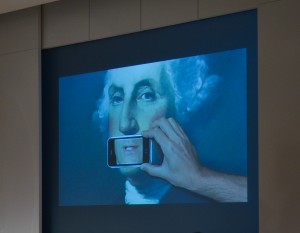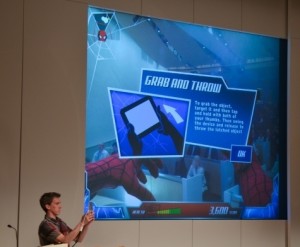The Mid-Atlantic Marketing Summit is one terrific conference. And I’m pretty skeptical when it comes to conferences; a lot of the time I find myself in sessions doodling or diving into my reading backlog, or outside walking the halls talking with other stragglers. In other words, so many conferences offer the same-old, same-old.
Too often there’s a big gap between expectation and reality. Not this time.
The MAM Summit is about strategy. And execution.
I received a pass to attend the summit, and I was excited by the sessions. The trends were trendy. The case studies showcased results. And the digital agencies showing off their interactive work are doing some really cool stuff.
Trends. Un-trends. And zombies in the workplace.
Here are my 9 top takeaways.
1. We’re desperate to detox. In a presentation about 2014 digital trends, marketer Rohit Bhargava talked about people’s need to unplug amidst all the ad copy and marketing clutter in our daily lives. Some tips for your business: create mute buttons to enable people to interact with your content on their own terms and respect “sacred” times (i.e., don’t call at dinnertime or send your marketing crap on Christmas Day).
2. We’re obsessed with productivity. Yes, desperate detox and obsessive productivity are both digital marketing trends. Bhargava cited several apps that are about productivity on steroids. Some tips for your business: Fix inefficiencies (from screen load times to glitches in your e-commerce software), promise and deliver on speed, and innovate for productivity. Meanwhile, I need to check out Coffitivity, which claims to offer “coffee shop sound to boost your creativity.”
3. Nomophobia is a real problem. Have you ever walked out without your mobile phone and freaked out? If you’re afraid to have “no mobile phone” on hand, you just might have a touch of nomophobia. Go ahead. Admit it. You’re among friends here.
4. WYSIATI matters. CustomInk’s Sean Murphy talked about eight “un-trends” to grow your business. One of them is WYSIATI—What You See Is All There Is. In other words, if you don’t spell out what you do, customers won’t see it. So make sure your Web site isn’t leaving prospects guessing what services you offer, what features your product contains, and so forth. Remember all those cluttered Yellow Pages ads from days gone by? Now they make sense.
5. “Half of branding is familiarity.” Sean Murphy said something really important that organizations need to understand: if you think you’ve heard of something, you tend to like it more. In other words, branding really matters. Case in point: early in my business, I sent out marketing materials annually to a targeted list. After that, I’d run into some of the folks in the course of my business, and a good percentage of the time the person would say, “Oh, we’ve met before.” We hadn’t, but they knew my “brand” (of course I didn’t correct the record).
6. Be where you “own your algorithm.” McCormick’s Jennifer LaFrance talked about how her company has built communities around key products (notably OLD BAY and GrillMates) and nurtured its brand advocates. During the Q&A, I asked LaFrance about shifting away from Facebook in light of the platform’s push to “pay to play.” Her response: McCormick is increasingly trying to drive organic content to its Web site, which is “where we own the algorithm.” I’m going to steal this line (with attribution, of course) the next time I need to drive home the importance of your hub.

7. QR codes don’t have to be boring. Matt Walker of White+Partners discussed the challenge of marketing Fairfax County in the shadow of tourist mecca Washington, DC. Enter QR codes (seriously, those quick response square barcodes can be amazing). When people scanned a QR code on George Washington, Thomas Jefferson, or Ben Franklin’s mouth, they were greeted with audio (and moving lips). Franklin even spoke French. If you can create an engaging and rewarding experience, your message will be memorable.

8. Think experiential. Both Owen Shifflett (Viget) and Carlson Bull (Bully! Entertainment) demonstrated that good immersive experiences can entertain, engage, and market at the same time. Shifflett showcased several immersive videos his agency has done for Dick’s Sporting Goods. They include both e-commerce and shareable elements. Bull, meanwhile, showed off the Amazing Spiderman II game, a very experiential game in which users unlock levels by scanning markers on different Kellogg’s products.
9. “The future of work is play.” 10Pearls CEO Imran Aftab gave a talk on the recipe to overcome eyes-glazed-over at work (i.e., zombies). Gamification is increasingly making its way into the workplace, and this has implications for your business. Aftab’s talk was fascinating, and I will write more about that in a future post.
Did you attend the Mid-Atlantic Marketing Summit? If so, what were your top takeaways?
Photos courtesy of the Mid-Atlantic Marketing Summit.



